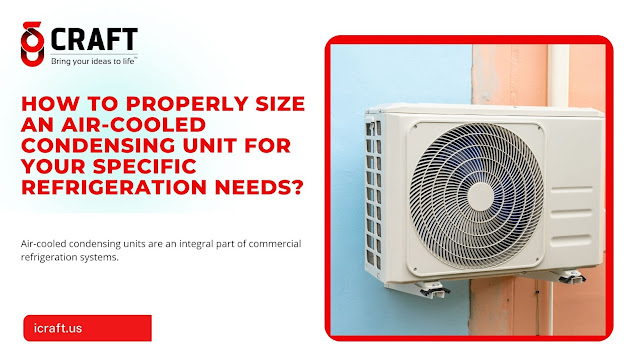How to Properly Size an Air-Cooled Condensing Unit for Your Specific Refrigeration Needs?
Air-cooled condensing units are an integral part of commercial refrigeration systems. These units extract heat from inside a refrigeration space and dissipate it outside through the air.
They have a significant impact on energy consumption and should be sized accurately to maximize their efficiency and minimize operating costs.
Proper sizing of an Air Cooled Condensing Unit is essential for optimal performance and energy efficiency. Read on to see the steps to size your specific refrigeration needs properly.
Understanding Air Cooled Condensing Units
Condensing units are comprised of a compressor, a condenser coil, a fan, and a control system. When in operation, the compressor pumps refrigerant through the condenser coil, which is mounted outdoors.
The fan draws hot air from the condenser coil and exhausts it outside. This process of heat exchange cools the refrigerant, which then flows back into the compressor to repeat the cycle.
Factors Affecting Sizing
Several factors must be considered when sizing Condensing Units. These factors include the desired refrigeration load, temperature requirements, humidity levels, ambient temperature, weather conditions, and possible future expansions.
It is important to determine the maximum cooling load requirement of your refrigeration unit to select an appropriately sized one.
Calculating the Proper Size
To calculate the proper size, follow these steps:
1. Determine the cooling capacity requirement of your refrigeration unit in BTU/h.
2. Determine the temperature difference between the refrigerated space and the outdoor ambient temperature.
3. Convert BTU/h to watts.
4. Calculate the heat transfer area required in square feet.
5. Use the heat transfer area, temperature difference, and refrigerant type to select an appropriately sized one.
Other Considerations
In addition to the factors affecting sizing, other considerations should also be taken into account. These include the type of refrigerant being used and the system's energy efficiency.
Use R290 refrigerant for higher energy efficiency, which is environmentally friendly and reduces the carbon footprint of your refrigeration system.
Conclusion
Air-cooled condensing units are an essential component of Commercial Refrigeration systems. Proper sizing of the unit is crucial for optimal performance and energy efficiency.
By following the outlined steps, you can determine the correct size of the air-cooled condensing unit required for your specific refrigeration needs. Incorporating R290 refrigerant into your users can also provide you with higher energy efficiency and environmentally friendly benefits.
At iCraft, we provide reliable and energy-efficient thermal solutions for commercial refrigeration. Contact us for more information on our R290 Water-Cooled Condensing Unit and other refrigeration system solutions.
It is crucial to rely on a reputable manufacturer, such as iCraft, to ensure you receive high-quality and reliable service that will last for years. Visit the Website. https://icraft.us/

.png)


Comments
Post a Comment